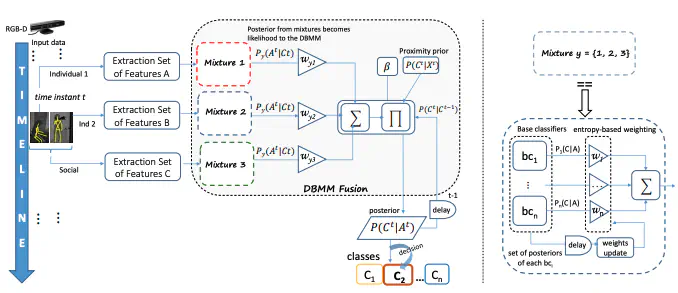Social activity recognition based on probabilistic merging of skeleton features with proximity priors from RGB-D data

Abstract
Social activity based on body motion is a key feature for non-verbal and physical behavior defined as function for communicative signal and social interaction between individuals. Social activity recognition is important to study human-human communication and also human-robot interaction. Based on that, this research has threefold goals: (1) recognition of social behavior (e.g. human-human interaction) using a probabilistic approach that merges spatio-temporal features from individual bodies and social features from the relationship between two individuals; (2) learn priors based on physical proximity between individuals during an interaction using proxemics theory to feed a probabilistic ensemble of activity classifiers; and (3) provide a public dataset with RGB-D data of social daily activities including risk situations useful to test approaches for assisted living, since this type of dataset is still missing. Results show that using the proposed approach designed to merge features with different semantics and proximity priors improves the classification performance in terms of precision, recall and accuracy when compared with other approaches that employ alternative strategies.